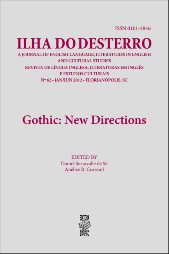A preface to theory of art-fear in Brazilian literature
DOI:
https://doi.org/10.5007/2175-8026.2012n62p341Abstract
There is no tradition in the study of horror in Brazilian literature; with Álvares de Azevedo”s tales of Noite na Taverna generally considered as the only example of Gothic, terror or horror narrative quoted in literary history. This article aims to demonstrate that there are several works in Brazilian literature which could be classified as “fear literature”—a fictional narrative that produces “artistic fear”. In fact, some of the most important Brazilian authors, including Machado de Assis, Bernardo Guimarães, Aluísio Azevedo, Inglês de Souza, João do Rio, Humberto de Campos and Coelho Neto, penned works in the macabre during the nineteenth and early twentieth centuries. However, critics were either unable to identify them as works of horror or paid no attention to an area of fiction in which social problems were not realistically represented. Therefore, research in this field must first identify the basic characteristics of fictional horror in our country. We are interested in (i) the real fears represented in Brazilian fiction, be them caused by either the natural or supernatural, and in (ii) the narrative features which produce the effect of “artistic fear” upon the reader.




